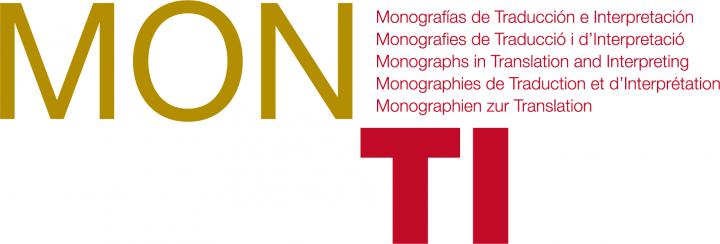An entry by Jan Buts for the forthcoming Translating Cultures Glossary
The idea of copying expands with the multiplication of media, and so do the techniques of duplication, as in the movement from cyanotype (blueprints) to xerography (photocopies). In a digital environment, a handful of mouse clicks or keystrokes suffice to copy and paste huge swathes of data, and there are, it seems, barely any boundaries to the replication of various types of information. Etymologically, then, it is not surprising that ‘copy’ shares an ancestry with ‘copious’ and ‘cornucopia’, the mythical horn of plenty, attribute of the deities. Thus, even when the term is solely applied to written documents, the intimate connections between power, wealth and penmanship are clear. Wherever there is excess, however, panic surfaces, and the sheer imitative force of copying practices creates authenticity-driven anxiety around forgery, counterfeiting and falsehood.
The academic community, for instance, relies on an intricate system of copy-signalling. For published research, license to quote can only be obtained by adhering to a strict set of rules documented in competing style manuals that meticulously ritualize borrowing and attribution. Different rules for summarizing, paraphrasing and quoting indicate the difficulty of separating the meaning of expression from its form, and the continued effort nevertheless to do so. While bibliographic referencing partly facilitates readers’ journeys into the web of scientific co-construction, the practice also reveals an apotropaic resistance to the spectre of academia’s most forceful taboo: plagiarism. Plagiarism is, above all, a deontological issue. The duty to acknowledge one’s sources reveals a profound reverence not only for the research culture as a whole, but especially for the creator of an original composition, who continues to enjoy the Romantic interconnection of genius and authorship. Finally, even when all due precautions are taken, any artefact of information may still be withheld from scholarly consideration as a result of the curious capitalist expansion of the range of phenomena that can be considered private property.
Beyond academia, consumer society as a whole is strongly impacted by regulations concerning intellectual property, especially those related to copyright. The modern history of copyright starts out, as everything does, with the word of God: In 1439, Johannes Gutenberg invented the moveable-type printing press, which allowed him efficiently to produce dozens of identical copies of the Bible. In the United Kingdom, the Stationers’ Charter of 1557 effectively granted a printing and publishing monopoly to a guild of stationers, giving its members the right to assert their ownership of a text and prohibit others from publishing it. It held sway until the 1710 Statute of Anne (8 Anne c 19) recognized the author of a work, rather than the bookseller, as the appropriate holder of copyright (Atkinson and Fitzgerald 2014, 23). The Statute of Anne is considered the first national codification of authorial copyright, and it would take until 1886 for the Berne convention to establish ‘reciprocal international copyright law’ (Howsam 2015, xi). While the convention was attentive to matters as diverse as architecture, drama, geography and music, and upon various revisions extended authors’ rights, for instance to the moral domain of integrity, it did not acknowledge ‘the translator’s copyright in the translated text’ until the 1971 revision (Venuti 1998, 52). Such blindness to the presence of translation is all the more baffling in a document presently counting 175 signatories, but originally only drafted in the colonial English and French languages, according to the corresponding cultures’ sensibilities (Basalamah and Sadek 2014, 398). However, the subordination of translator to author, and the often inconsistent mistreatment of the process and product of translation in national as well as international copyright law, can partly be ascribed not to malicious intent, but simply to problems of categorization: as soon as the notion of ‘copy’ is discussed outside the framework of mechanical reproduction, oppositions between original and derivative, form and content, and producer and consumer become increasingly unstable (Derrida 1985, 196). Translation, in short, means trouble, as it reintroduces the ambiguities of language that the law continually has to embattle.
An interesting attack on existing copyright regulations has been staged in recent decades by the countercultures of cyberspace, which are committed to expanding the public domain. Both corporate and free-floating catch-phrases and buzzwords such as ‘open access’, ‘creative commons’ and ‘copyleft’ indicate a desire to assert a ‘fundamental human right to access our shared knowledge’ (Nesson 2012, ix). Thus, within the context of a utopian convergence of medium and message, the technological affordances of a rapidly changing and interactive hyperlinked digital environment – based on access rather than ownership and constituted by prosumers who claim membership of a global community – are mobilized to reinvigorate democratic ideals of a transparent culture of sharing. Nevertheless, the conditions attached to types of licence such as Creative Commons’ (n.d.) ‘ShareAlike’ and ‘NoDerivatives’ once more raise questions regarding the interaction of text and context, and thus the role of translation in the dissemination of knowledge. In a world in which the only true lingua franca is binary code, and where transformation is key to all transactions, a translation may well be said to constitute a better ‘copy’ of an ‘original’ document than an orthographic reproduction, given culturally variant contexts of reception. Here, equivalence, and the factors that may contribute to its recognition, enable us to understand aspects of the contestation of copyright and, by extension, to probe the conceptual body covered by the notion of ‘copy’. Furthermore, in its guise as exchange value, equivalence dominates the economic interests that trigger ideological disagreement around reproductive practice. The concept of ‘copy’, then, ultimately illuminates the symbiotic human desires for creation and imitation, and the reluctance to pass on the cornucopia that governs their interaction.
References
Atkinson, Benedict and Brian Fitzgerald. 2014. A Short History of Copyright: The Genie of Information. Cham, Heidelberg, New York, Dordrecht and London: Springer.
Basalamah, Salah and Gaafar Sadek. 2014. “Copyright Law and Translation: Crossing Epistemologies.” The Translator 20, no. 3: 396-410. https://doi.org/10.1080/13556509.2014.931020.
Creative Commons. n.d. “Licensing Types.” Accessed February 27, 2018. https://creativecommons.org/share-your-work/licensing-types-examples/
Derrida, Jacques. 1985. “Des Tours de Babel.” Translated by Joseph F. Graham. In Difference in Translation, edited by Joseph F. Graham, 165-207. Ithaca and London: Cornell University Press.
Howsam, Leslie. 2015. “Chronology.” In The Cambridge Companion to the History of the Book, edited by Leslie Howsam, x-xii. Cambridge: Cambridge University Press.
Nesson, Charles R. 2012. “Foreword.” In The Digital Public Domain: Foundations for an Open Culture, edited by Melanie Dulong de Rosnay and Juan Carlos De Martin, xi-xiii. Cambridge: Open Book Publishers.
Venuti, Lawrence. 1998. The Scandals of Translation: Towards an Ethics of Difference. London and New York: Routledge.
Related Reading
Sadek, Gaafar (2012) ‘Considerations for Translation Rights 2.0’, Translation Spaces 1: 81-100.
Street, John, Keith Negus and Adam Behr (2018) ‘Copy Rights: The politics of copying and creativity’, Political Studies 66(1): 63-80.
Venuti, Larence (1995) ‘Translation, Authorship, Copyright’, The Translator 1(1): 1-24.


